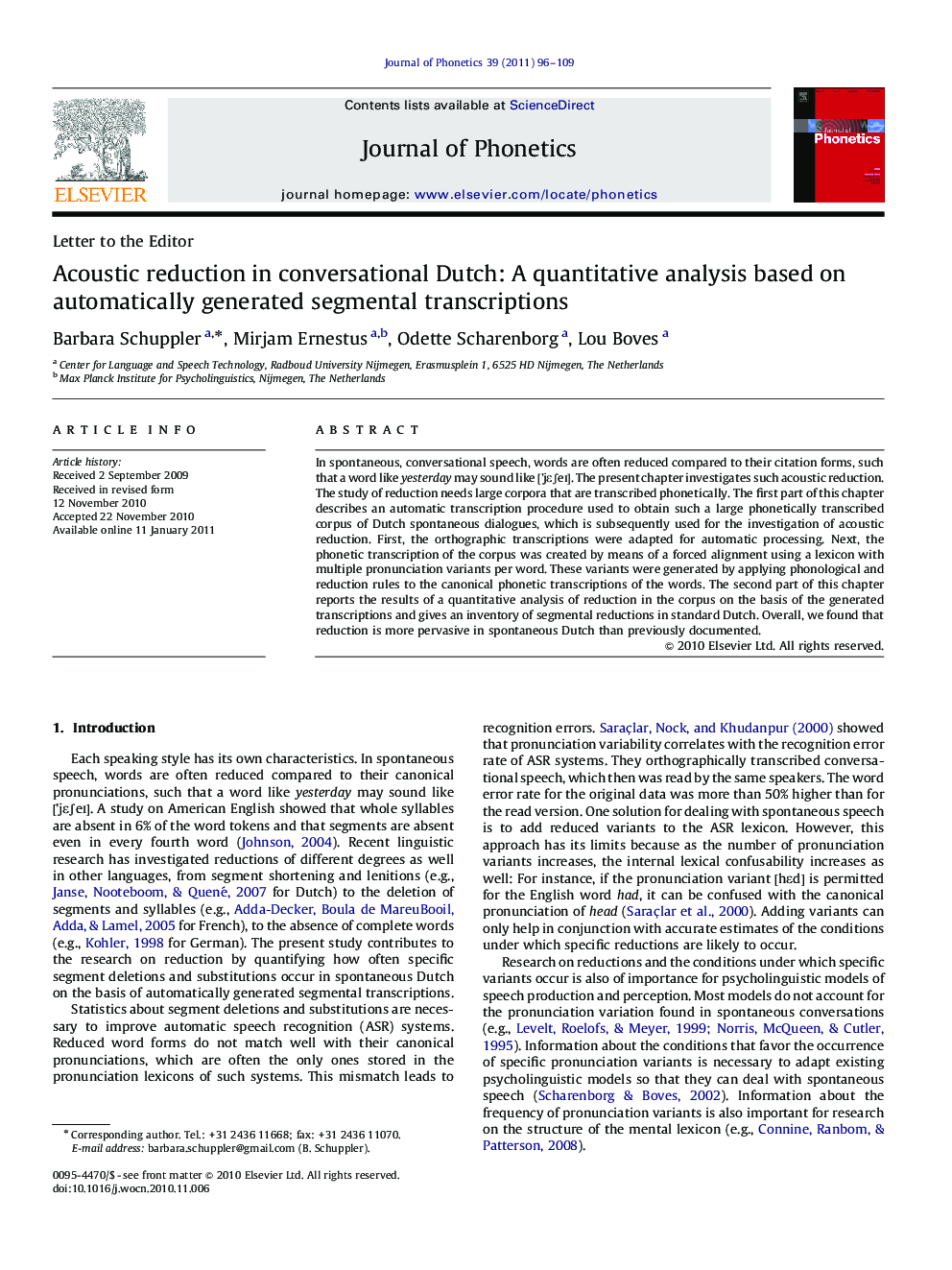| کد مقاله | کد نشریه | سال انتشار | مقاله انگلیسی | نسخه تمام متن |
|---|---|---|---|---|
| 1101052 | 953510 | 2011 | 14 صفحه PDF | دانلود رایگان |

In spontaneous, conversational speech, words are often reduced compared to their citation forms, such that a word like yesterday may sound like [’jεʃei][’jεʃei]. The present chapter investigates such acoustic reduction. The study of reduction needs large corpora that are transcribed phonetically. The first part of this chapter describes an automatic transcription procedure used to obtain such a large phonetically transcribed corpus of Dutch spontaneous dialogues, which is subsequently used for the investigation of acoustic reduction. First, the orthographic transcriptions were adapted for automatic processing. Next, the phonetic transcription of the corpus was created by means of a forced alignment using a lexicon with multiple pronunciation variants per word. These variants were generated by applying phonological and reduction rules to the canonical phonetic transcriptions of the words. The second part of this chapter reports the results of a quantitative analysis of reduction in the corpus on the basis of the generated transcriptions and gives an inventory of segmental reductions in standard Dutch. Overall, we found that reduction is more pervasive in spontaneous Dutch than previously documented.
Research highlights
► A Dutch spontaneous speech corpus was automatically transcribed with an ASR system.
► By applying 31 reduction rules to canonical pronunciations, variants were created.
► The transcriptions reached a high agreement with manual transcriptions (85.9%).
► 40.3% of the word tokens were reduced, 9.1% of all syllabic nuclei were absent.
► We analyze the impact of segmental context on vowel and consonant reductions.
Journal: Journal of Phonetics - Volume 39, Issue 1, January 2011, Pages 96–109